
Last week, we reported on Pete Whittaker's first ascent of Crown Royale, a new trad route on Profile Wall in Jøssingfjord, Norway.
After making the first ascent, Pete described the route as 'up there with the hardest bit of trad climbing I've done'. The ascent was somewhat unexpected, with Pete initially suspecting that the route wouldn't go this season. As such, he hadn't given the grade too much thought.
Earlier today, Pete proposed a grade of 9a, making Crown Royale one of the hardest trad routes in the world. Writing on Instagram, he said:
'It's always tricky to grade climbs towards the upper end of your level, as every increase in perceived difficulty feels like a huge step, when in reality you're not actually progressing in grade that much. However I do think it's good to try and suggest something for new climbs, as it helps with a consensus over time'.
Pete's approach to grading was two-fold - first, a subjective approach based on his personal perception of how hard Crown Royale was compared to other established hard trad lines, and second, a more objective approach using the Darth Grader app.
'The obvious route that I have to compare Crown Royale to is Recovery Drink (suggested as 8c+); same wall, similar features, and a route I climbed back in 2019. To me, Crown Royale felt harder overall than Recovery Drink, but not by much, which is why my initial feeling about the route has been 8c+/9a'.
'I've seen a few other climbers using the Darth Grader app to help as a guide when grading new routes, so gave it ago and it algorithmed (is that a word?) 'soft 9a'. Of course using the app is still quite subjective, and the boulder/route grades I gave to individual sections of the climb could in fact be incorrect. However, again I used the 'general consensus' boulder grades of Recovery Drink, plus other crack/boulders to help grade the sections of Crown Royale (i.e. this is easier than that… that is harder than this, etc)'.
'All things considered I'll suggest 9a (very low end), and look forward to see what future repeats think. To me it would seem harsh to suggest 8c, and incredibly over generous to suggest 9a+. So I know it sits somewhere between those'.
'Either way whatever it settles at is all good, because if you like crack climbing, a few crimps and 100m pump fests, then you're bound to have a jolly good time on this one'.
Earlier in the week, we asked Pete for some further details about Crown Royale and his experience on it, and here's what he had to say.
Congratulations on climbing Crown Royale! How does it feel to have completed a project that you've invested so much time and energy into?
Of course great to get it finished. Usually I have one or two main projects I'd like to complete each year, and this was my one for this year.
I focused my training on being in shape for the September season, so I'm glad it paid off.
Last time we spoke you were telling us all about Eigerdosis 8c, the 'second pitch' of Crown Royale, which you'd just climbed in isolation. What did it feel like to climb into Eigerdosis from the ground?
You say second pitch, but the idea in my mind was always one pitch; I always saw Eigerdosis as a half pitch to be honest. Of course it's still a great bit of climbing by itself, but the goal was always the full line.
Eigerdosis felt harder coming from the ground, the bottom section of the route although not as pumpy, actually has the hardest moves of Crown Royale, so you've already climbed something a bit burly to get there.
The length of time you have to spend on the wall to climb the pitch gradually wears you down, and also the weight of the rope at the end is pretty heavy - which you don't get on Eigerdosis by itself.
Tell us about the rest of the climbing on the route:
The bottom of the route is bouldery; you have some easy climbing, into a difficult boulder, followed by easier climbing again.
It's important to place the gear well in the bouldery section to stay safe, and not get tired on the easy section to enable a decent recovery at the mid height rest. Basically, don't end up with jamming pump, or else it takes the edge off your crimping ability for the next section.
From the mid height rest I pulled up an extra rack for the top section.
On instagram you mentioned that you soloed the final twenty metres - was this something you always knew you'd have to do, and - crucially - were you still pumped at the time?
I feel like people have really taken to this solo thing, but it's honestly no big deal, the climbing is incredibly easy up there, and its actually safer to untie and relieve yourself of the rope drag pulling you off.
I had always wanted to finish the pitch to the summit of the Profile Wall, so I knew I was carrying on, although I hadn't actually checked out any of the moves.
From the end of the steep bit, you climb E1/2 terrain (with a lot of rope drag). When I untied it was like grade Severe to the top.
Does the route mostly follow crack systems or is there some face climbing in there too?
It's a mixture of both crack and face. I'd say 70% jams and 30% face holds. The cruxes have a mixture of both. The easier sections are mainly crack.
I think if you had no jamming experience it'd be hard to recover in the jams (most of the rests on the route are jams), and likewise if you only climbed splitter cracks, you'd be lacking the strength for the face climbing bits.
How many attempts did you put in on the full line before making the FA?
I actually climbed it on my third attempt when coming from the ground, so quite quickly. However, I think if I had started coming from the ground without having climbed Eigerdosis first, I would have had many more failed attempts. I learnt a lot by redpointing that first.
Talk us through the successful attempt, did it all go to plan or were there some surprises?
I'd say it went to plan, as I managed to get up it, although I must admit I was struggling on the top section (after the redpoint crux) much more than I would have liked.
The climbing is easier, but I just had a massive build up of general fatigue from being on the wall for so long. I remember having to use an intermediate hold (one I'd never used before), to make sure I didn't fall.
How long were you on the wall for in total?
Not entirely sure, maybe an hour? That's a bit of a guess though.
This brings an end to a longstanding project, as well as filling in what you described as 'the last major obvious line' on Profile Wall. Do you already have more climbing on your radar, or will you be taking a well-deserved break?
There is always more climbing.
Watch our video interview with Pete below:

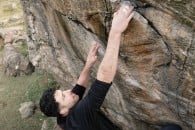

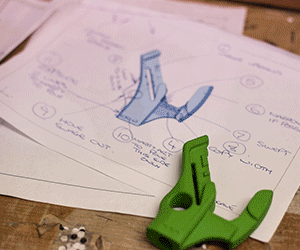








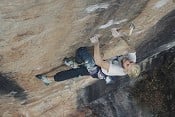



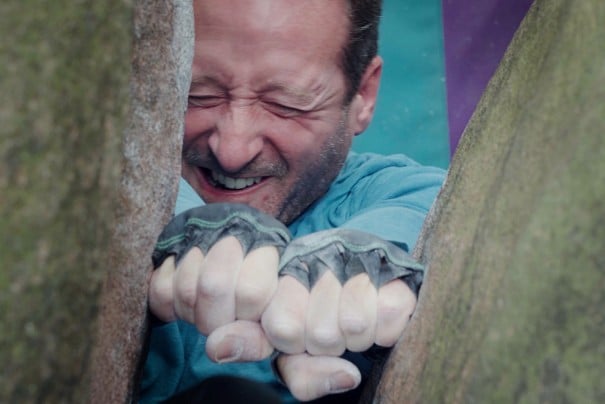
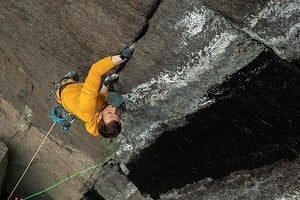
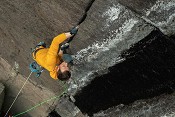
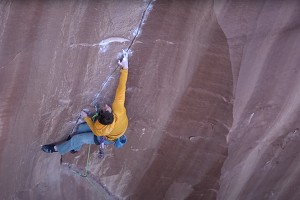
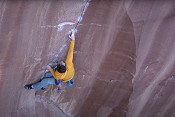
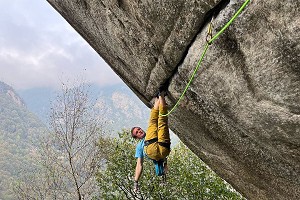
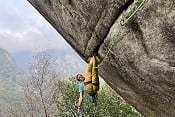

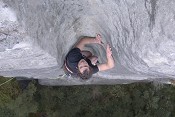
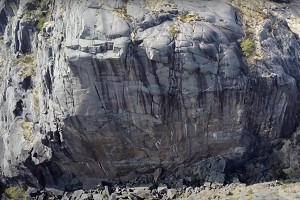

Comments